Plum
How to submit an article:
- Registered users can submit any published journal article that has a unique DOI (Digital Object Identifier) name or link to Research Hub.
- For example, you can paste the full DOI link:
https://doi.org/10.1109/5.771073or just the DOI name:10.1109/5.771073into the field above and click submit. - The person who is first to submit a valid article to Research Hub will forever be credited for it, and every article submission earns you +6 Research Points.
Also known as: Dried Plum, Prune
Published research studies are articles that present the findings of original research that has undergone a peer-review process and has been made publicly available in scholarly journals, books or other media.
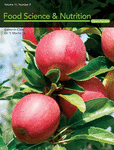
The effects of plum products consumption on lipid profile in adults: A systematic review and dose–response meta‐analysis
2024 Feb 25 Food Science & Nutrition Heydarian A, Tahvilian N, Asbaghi O, Cheshmeh S, Nadery M, Aryaeian N
Systematic Review Cholesterol LDL PlumEating plums, especially dried plums, significantly lowers LDL levels and total cholesterol levels, particularly in adults with existing health issues.
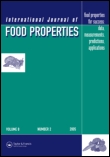
A comprehensive review on the availability of bioactive compounds, phytochemicals, and antioxidant potential of plum ( Prunus Domestica )
2023 Aug 23 International Journal of Food Properties Ayub H, Nadeem M, Mohsin M, Ambreen S, Khan F, Oranab S, et al.
Review Article Bone Health Blood Sugar Antioxidant PlumPlums, which are rich in bioactive compounds, antioxidants, and vitamins, can help maintain blood glucose level, bone health, heart health and even treat certain cancers.
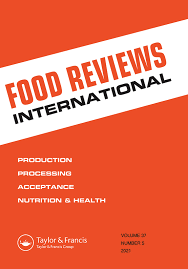
Australian Native Plum: A Review of the Phytochemical and Health Effects
2023 Feb 10 Food Reviews International Li J, Liu H, Mazhar MS, Quddus S, Agar OT, Suleria HAR
Review Article PlumAustralian native plums contain phytochemicals that exhibit health benefits such as cardiovascular and liver protection.
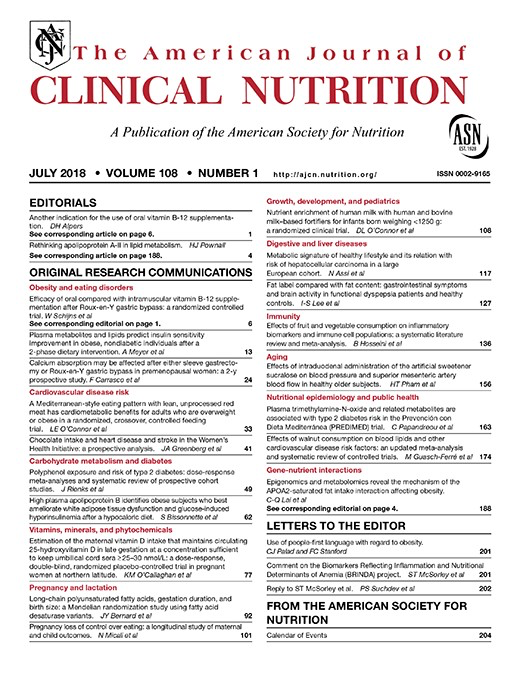
Prunes preserve hip bone mineral density in a 12-month randomized controlled trial in postmenopausal women: the Prune Study
2022 Oct The American Journal of Clinical Nutrition De Souza MJ, Strock NCA, Williams NI, Lee H, Koltun KJ, Rogers C, et al.
Randomised Controlled Trial Bone Mineral Density PlumA daily intake of 50 grams of prunes can maintain hip bone density in postmenopausal women, potentially reducing hip fracture risks.
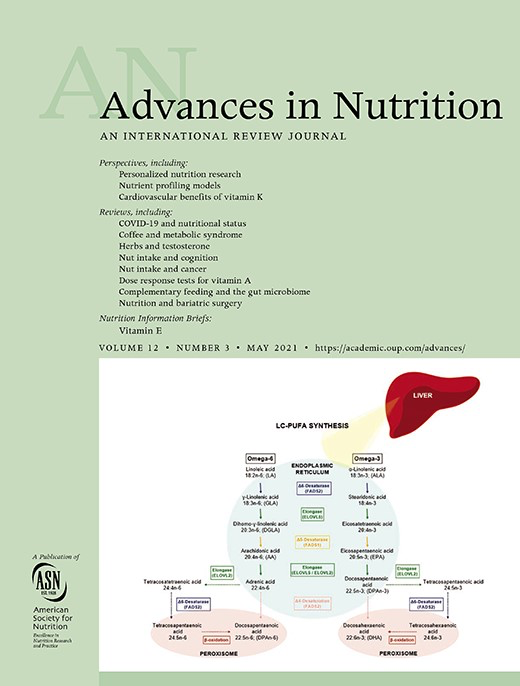
The Role of Prunes in Modulating Inflammatory Pathways to Improve Bone Health in Postmenopausal Women
2022 Sep Advances in Nutrition Damani JJ, De Souza MJ, VanEvery HL, Strock NCA, Rogers CJ
Systematic Review Review Article Prunes Bone Loss Bone Health PlumPrunes demonstrate potential as a dietary intervention to protect against, prevent and even reverse bone loss in osteoporosis, particularly in postmenopausal women.
Research insights are moderated by the Research Hub team and offer an at-a-glance overview of interesting research findings.

2024 Food Science & Nutrition
Eating plums, especially dried plums, significantly lowers LDL levels and total cholesterol levels, particularly in adults with existing health issues.
Systematic Review Cholesterol LDL
The effects of plum products consumption on lipid profile in adults: A systematic review and dose–response meta‐analysis
Heydarian A, Tahvilian N, Asbaghi O, Cheshmeh S, Nadery M, Aryaeian N

2023 International Journal of Food Properties
Plums, which are rich in bioactive compounds, antioxidants, and vitamins, can help maintain blood glucose level, bone health, heart health and even treat certain cancers.
Review Article Antioxidant Blood Sugar Bone Health
A comprehensive review on the availability of bioactive compounds, phytochemicals, and antioxidant potential of plum (
Prunus Domestica
)
Ayub H, Nadeem M, Mohsin M, Ambreen S, Khan F, Oranab S, et al.

2023 Food Reviews International
Australian native plums contain phytochemicals that exhibit health benefits such as cardiovascular and liver protection.
Review Article
Australian Native Plum: A Review of the Phytochemical and Health Effects
Li J, Liu H, Mazhar MS, Quddus S, Agar OT, Suleria HAR

2022 The American Journal of Clinical Nutrition
A daily intake of 50 grams of prunes can maintain hip bone density in postmenopausal women, potentially reducing hip fracture risks.
Randomised Controlled Trial Bone Mineral Density
Prunes preserve hip bone mineral density in a 12-month randomized controlled trial in postmenopausal women: the Prune Study
De Souza MJ, Strock NCA, Williams NI, Lee H, Koltun KJ, Rogers C, et al.

2022 Advances in Nutrition
Prunes demonstrate potential as a dietary intervention to protect against, prevent and even reverse bone loss in osteoporosis, particularly in postmenopausal women.
Systematic Review Bone Health Bone Loss Prunes
The Role of Prunes in Modulating Inflammatory Pathways to Improve Bone Health in Postmenopausal Women
Damani JJ, De Souza MJ, VanEvery HL, Strock NCA, Rogers CJ
Review Articles
Review articles summarise and critically evaluate the current state of research on a specific topic or field by synthesising multiple primary research studies.

The effects of plum products consumption on lipid profile in adults: A systematic review and dose–response meta‐analysis
2024 Feb 25 Food Science & Nutrition Heydarian A, Tahvilian N, Asbaghi O, Cheshmeh S, Nadery M, Aryaeian N
Systematic Review Cholesterol LDL PlumEating plums, especially dried plums, significantly lowers LDL levels and total cholesterol levels, particularly in adults with existing health issues.

A comprehensive review on the availability of bioactive compounds, phytochemicals, and antioxidant potential of plum ( Prunus Domestica )
2023 Aug 23 International Journal of Food Properties Ayub H, Nadeem M, Mohsin M, Ambreen S, Khan F, Oranab S, et al.
Review Article Bone Health Blood Sugar Antioxidant PlumPlums, which are rich in bioactive compounds, antioxidants, and vitamins, can help maintain blood glucose level, bone health, heart health and even treat certain cancers.

Australian Native Plum: A Review of the Phytochemical and Health Effects
2023 Feb 10 Food Reviews International Li J, Liu H, Mazhar MS, Quddus S, Agar OT, Suleria HAR
Review Article PlumAustralian native plums contain phytochemicals that exhibit health benefits such as cardiovascular and liver protection.

The Role of Prunes in Modulating Inflammatory Pathways to Improve Bone Health in Postmenopausal Women
2022 Sep Advances in Nutrition Damani JJ, De Souza MJ, VanEvery HL, Strock NCA, Rogers CJ
Systematic Review Review Article Prunes Bone Loss Bone Health PlumPrunes demonstrate potential as a dietary intervention to protect against, prevent and even reverse bone loss in osteoporosis, particularly in postmenopausal women.
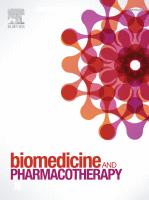
Cancer protective effects of plums: A systematic review
2022 Feb Biomedicine & Pharmacotherapy Bahrin AA, Moshawih S, Dhaliwal JS, Kanakal MM, Khan A, Lee KS, et al.
Systematic Review Antioxidant Anti-Inflammatory Cancer PlumPlums, specifically European and Japanese species, exhibit anti-inflammatory and antioxidant properties that may be used for the treatment and prevention of cancer.
Clinical Trials
Clinical trials are research studies that involve people and are conducted to evaluate the safety and efficacy of new treatments or interventions, such as drugs, medical devices, or behavioural therapies.

Prunes preserve hip bone mineral density in a 12-month randomized controlled trial in postmenopausal women: the Prune Study
2022 Oct The American Journal of Clinical Nutrition De Souza MJ, Strock NCA, Williams NI, Lee H, Koltun KJ, Rogers C, et al.
Randomised Controlled Trial Bone Mineral Density PlumA daily intake of 50 grams of prunes can maintain hip bone density in postmenopausal women, potentially reducing hip fracture risks.
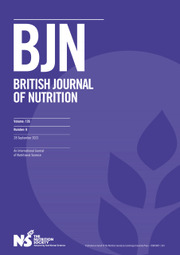
Comparative effects of dried plum and dried apple on bone in postmenopausal women
2011 May 31 British Journal of Nutrition Hooshmand S, Chai SC, Saadat RL, Payton ME, Brummel-Smith K, Arjmandi BH
Randomised Controlled Trial Osteoporosis Bone Mineral Density PlumDried plum consumption enhances bone mineral density in postmenopausal women, primarily by reducing the rate of bone turnover.
Study Protocols
Published study protocols are detailed plans that outline the objectives, methodology, statistical analyses, and organisation of a research study that have been made publicly available for others to review and use as a reference.
Presentation Slides

Systematic Review
Eating plums, especially dried plums, significantly lowers LDL levels and total cholesterol levels, particularly in adults with existing health issues.
Heydarian A, Tahvilian N, Asbaghi O, Cheshmeh S, Nadery M, Aryaeian N

Review Article
Plums, which are rich in bioactive compounds, antioxidants, and vitamins, can help maintain blood glucose level, bone health, heart health and even treat certain cancers.
Ayub H, Nadeem M, Mohsin M, Ambreen S, Khan F, Oranab S, Rahim M, Zubair khalid M, Zongo E, Zarlasht M, Ullah S

Review Article
Australian native plums contain phytochemicals that exhibit health benefits such as cardiovascular and liver protection.
Li J, Liu H, Mazhar MS, Quddus S, Agar OT, Suleria HAR

Randomised Controlled Trial
A daily intake of 50 grams of prunes can maintain hip bone density in postmenopausal women, potentially reducing hip fracture risks.
De Souza MJ, Strock NCA, Williams NI, Lee H, Koltun KJ, Rogers C, Ferruzzi MG, Nakatsu CH, Weaver C

Systematic Review
Prunes demonstrate potential as a dietary intervention to protect against, prevent and even reverse bone loss in osteoporosis, particularly in postmenopausal women.
Damani JJ, De Souza MJ, VanEvery HL, Strock NCA, Rogers CJ

Systematic Review
Plums, specifically European and Japanese species, exhibit anti-inflammatory and antioxidant properties that may be used for the treatment and prevention of cancer.
Bahrin AA, Moshawih S, Dhaliwal JS, Kanakal MM, Khan A, Lee KS, Goh BH, Goh HP, Kifli N, Ming LC
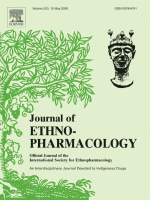
Review Article
Prunus mume fruit extracts display hepatoprotective, anti-inflammatory, antioxidative, antibacterial effects, and show promise for treating cancer and alleviating chemotherapy side-effects.
Bailly C

Animal Study
Dried plums potentially prevent and reverse bone loss in postmenopausal women facing osteoporosis, offering a promising functional food therapy solution with long-lasting effects.
Arjmandi BH, Johnson SA, Pourafshar S, Navaei N, George KS, Hooshmand S, Chai SC, Akhavan NS

Review Article
Dried plums, or prunes, have potential to exert beneficial effects on bone health and may help in combating osteoporosis in postmenopausal women, if consumed as part of their recommended fruit intake.
Wallace T
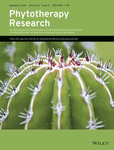
Systematic Review
Plums display anti-inflammatory, antioxidant properties and can enhance memory, and their consumption shows potential health benefits for cognitive function, bones, and cardiovascular elements.
Igwe EO, Charlton KE
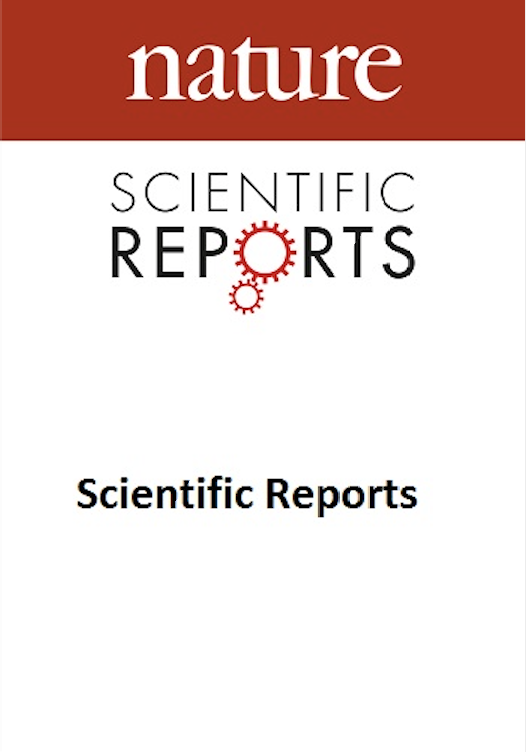
Animal Study
Dried plum was found to be most effective in reducing bone resorption and preventing bone loss caused by ionizing radiation exposure.
Schreurs AS, Shirazi-Fard Y, Shahnazari M, Alwood JS, Truong TA, Tahimic CGT, Limoli CL, Turner ND, Halloran B, Globus RK

Animal Study
Dried plum intake uniquely improves bone density, promotes growth of vertebral trabecular bone, prevents bone loss in tibia, and positively adjusts bone metabolism.
Rendina E, Hembree KD, Davis MKR, Marlow D, Clarke SL, Halloran BP, Lucas EA, Smith BJ

Randomised Controlled Trial
Dried plum consumption enhances bone mineral density in postmenopausal women, primarily by reducing the rate of bone turnover.
Hooshmand S, Chai SC, Saadat RL, Payton ME, Brummel-Smith K, Arjmandi BH
Executive Summary
Write an executive summary in the form of a blog article on the topic of "Research into Chinese medicine treatment for Plum" summarising the research below and using language that can be easily understood by patients and avoiding medical jargon using a professional and caring tone of voice.
Write an executive summary in the form of a blog article on the topic of "Researched Chinese medicine treatments for Plum" summarising the research below in an objective and easy to understand way, and using language that can be easily understood by patients. Group the article into Chinese medicine treatments first, followed by nutrition and other treatments. Avoid using medical jargon and use a professional and caring tone of voice.
Write me a concise but easy to understand executive summary on the topic of "Chinese medicine treatments for Plum" based on the following research that I will give you. Your summary should be 2 paragraphs long in Australian English spelling and include references to the studies.
A Systematic Review published in 2024 in the journal Food Science & Nutrition found that Eating plums, especially dried plums, significantly lowers LDL levels and total cholesterol levels, particularly in adults with existing health issues. The researchers conducted a systematic review and meta-analysis using keyword searches on databases such as PubMed, Scopus, and ISI Web of Science up to a specified date. They were on a mission to find eligible trials that would help ascertain the benefits of plum consumption on adult lipid profiles. In their observation of the collected data, they concluded that plum, specifically dried plum consumption, had a noteworthy impact on LDL levels, mainly when the subjects were in an unhealthy state. This consumption led to a significant decrease in total cholesterol levels in the unhealthy subjects. Nevertheless, the study couldn't establish major changes in triglycerides and HDL concentrations as a result of the plum consumption.
A Review Article published in 2023 in the journal International Journal of Food Properties found that Plums, which are rich in bioactive compounds, antioxidants, and vitamins, can help maintain blood glucose level, bone health, heart health and even treat certain cancers. The research explored the health benefits and medicinal effects of plums, a common fruit belonging to the Prunus genus. The study focused not only on their consumption as a food source but also their uses in beverages. Special attention was given to the polyphenolic compounds, bioactive compounds, and antioxidants inherent in plums, such as phenolic acids, anthocyanins, carotenoids, and various organic acids, alongside an array of necessary minerals and vitamins. Apart from detailing traditional nutritional components, the study analyzed the unique constituents of plums like caffeic acid, chlorogenic acid and other phenolic compounds which contribute to its antioxidant property. The broader health benefits provided by these compounds spanning bone health, cardiovascular health, blood glucose stabilization, and potential impacts on gastrointestinal diseases were studied, with a particular emphasis on their possible role in the prevention and treatment of heart disease and specific kinds of cancer: lung and oral. The role of plums' low fat and high dietary fibre content in heart disease prevention was of special focus.
A Review Article published in 2023 in the journal Food Reviews International found that Australian native plums contain phytochemicals that exhibit health benefits such as cardiovascular and liver protection. The research review examined five varieties of Australian native plums: Terminalia ferdinandiana (Kakadu Plum), Davidsonia jerseyana (Davidsons Plum), Podocarpus elatus (Illawarra Plum), Pleiogynium timorense (Burdekin Plum) and Parinari nonda (Nonda Plum). The paper explored each plum variety in terms of their ideal growing conditions, their phytochemical composition, their sensory properties, and their potential applications. Extracts from different parts of the fruit including the peel, pulp, and seeds were analyzed for their capabilities to interact with cell signaling pathways, scavenge free radicals, and inhibit harmful microorganisms such as bacteria, fungi, and viruses. The findings suggest that Australian native plums not only have substantial nutritional value - being high in dietary fiber and low in fat - but they also offer a multitude of health benefits. Notably, these fruits exhibit cardiovascular and liver-protective properties. Moreover, aside from their nutritional and health value, these native plums also display impressive economic potential. For instance, the pulp of these plums could be incorporated into food and beverage creation while their wood could be utilized for furniture making.
A Randomised Controlled Trial published in 2022 in the journal The American Journal of Clinical Nutrition found that A daily intake of 50 grams of prunes can maintain hip bone density in postmenopausal women, potentially reducing hip fracture risks. This research was conducted through a single-center, parallel-arm, randomized controlled trial over the course of a year. Postmenopausal women were randomly assigned into three groups - control, 50 grams of prunes, and 100 grams of prunes - and their bone mineral density (BMD) was assessed every 6 months. Secondary measurements included an observation of changes in bone biomarkers. Compliance and retention of participants were high particularly at the 50-gram dosage. In assessing the effects of prunes on bone health, the findings showed a distinct interaction between the amount of prune intake and bone mineral density in the hip region. Specifically, it indicated that consumption of 50 grams of prunes daily led to a preservation of hip BMD after 6 months, an effect which was still apparent after a year. Despite a higher dropout rate and less impact on BMD, the 100-gram prune group, when combined with the 50-gram group, presented stability in the FRAX score, which measures the risk of hip fractures.
A Systematic Review published in 2022 in the journal Advances in Nutrition found that Prunes demonstrate potential as a dietary intervention to protect against, prevent and even reverse bone loss in osteoporosis, particularly in postmenopausal women. Using sixteen preclinical trials with in vivo rodent models of osteopenia or osteoporosis, researchers investigated the effect of dietary supplementation with prunes. The research shows prunes' osteoprotective capabilities, preventing, reversing bone loss, and exerting anti-inflammatory and antioxidant effects. The prunes or their polyphenol extracts showed properties that decreased malondialdehyde and NO secretion and increased antioxidant enzyme expression. Two clinical trials further investigated prune consumption (50-100 g/d for 6-12 months) on bone health in postmenopausal women. The results of the studies revealed the promising outcome of improved bone mineral density and bone biomarker due to the consumption of dried plums. However, the effect of prunes on oxidative stress and inflammatory mediators remains less understood. The study hence emphasizes the need to investigate prunes' role in modulating the inflammatory and immune pathways related to bone health.
A Systematic Review published in 2022 in the journal Biomedicine & Pharmacotherapy found that Plums, specifically European and Japanese species, exhibit anti-inflammatory and antioxidant properties that may be used for the treatment and prevention of cancer. Methodology: The researchers conducted a systematic review of existing literature related to the effects of plums on cancer prevention and treatment. They used a variety of databases including Scopus, Google Scholar, PubMed, Medxriv, and the Cochrane Library, considering studies published from the inception of each database till July 2021. The validity of the studies was checked using the CONSORT checklist tool for quality assessment. A total of 6639 studies were initially scrutinized, narrowing down to 54 relevant studies for in-depth review. Discussion of Results: The analysis of the chosen studies revealed high antioxidant content in plum extracts. While the majority of the research supporting these findings were conducted in vitro, a smaller quantity of clinical studies involved in vivo testing. The promising results gathered from these studies suggest the potential of plums being used both for treatment and preventing cancer, especially due to their antioxidative properties.
A Review Article published in 2020 in the journal Journal of Ethnopharmacology found that Prunus mume fruit extracts display hepatoprotective, anti-inflammatory, antioxidative, antibacterial effects, and show promise for treating cancer and alleviating chemotherapy side-effects. The authors conducted an extensive database retrieval via SciFinder, PubMed, and various other resources using relevant keywords such as "Prunus mume", "Chinese plum", "Japanese apricot", and "cancer". They also consulted relevant textbooks, patents, reviews, and digital documents (in English). The purpose was to analyze the anticancer activities of the P. mume extracts and their potential use to prevent or treat cancers. They also aimed to review the use of the P. mume extracts to alleviate the side effects of chemotherapy, notably drug-induced gastrointestinal toxicities. In addition to showing hepatoprotective, anti-inflammatory, antioxidative, and antibacterial effects, the P. mume extracts were found to exhibit anticancer properties. Specifically, the extracts inhibited proliferation and induced apoptotic death of multiple types of cancer cells from both solid and hematological tumors. Furthermore, the extracts were found useful in treating mucositis and other gastrointestinal damages induced by anticancer drugs. The scientists profiled key natural products found in the extracts including ursolic acid and oleanic acid. However, they call for more robust evidence of anticancer activity in humans.
A Animal Study published in 2017 in the journal Nutrients found that Dried plums potentially prevent and reverse bone loss in postmenopausal women facing osteoporosis, offering a promising functional food therapy solution with long-lasting effects. The methodology focused on examining the influence of dried plum in preventing and reversing bone loss related to osteoporosis. Two populations were studied: an ovariectomized rat model, which simulates the condition in postmenopausal women, and actual osteopenic postmenopausal women. The subjects were given measured servings of dried plums and their bone mass and structure were analyzed over a certain period. The researchers also attempted to understand the possible mechanisms through which dried plum exerts its bone-protective effects. In terms of results, evidence suggested that dried plum effectively retarded bone loss in both the rat model and human subjects. An intriguing observation was from a follow-up study of the one-year clinical trial conducted five years earlier. Women who had been in the trial consuming 100 g dried plum per day were found to have retained bone mineral density more efficiently than comparative controls. Dried plum's beneficial effect was hypothesised to originate from its bioactive compounds. The overall findings strongly advocate dried plum as a functional food therapy for preventing osteoporosis in postmenopausal women.
A Review Article published in 2017 in the journal Nutrients found that Dried plums, or prunes, have potential to exert beneficial effects on bone health and may help in combating osteoporosis in postmenopausal women, if consumed as part of their recommended fruit intake. The research process involved a comprehensive review of scientific literature available in the PubMed database up until January 24, 2017. This literature included cell studies, animal studies, population and clinical studies that examined effects of dried plums or their extracts on markers of bone health. In total, 24 research papers were reviewed and their findings are summarized. Discussing the results, animal, cell, and clinical studies suggest that dried plums or their extracts positively impact bone formation and limit bone breakdown. This is likely due to the influence of dried plums on cell signaling pathways that dictate osteoblast (bone-building cells) and osteoclast (bone-destroying cells) differentiation. Clinical studies also indicate that consumption of dried plums could have beneficial effects on bone mineral density, particularly in postmenopausal women. There were no adverse effects reported in these studies, further suggesting that they could safely be included in regular dietary routines.
A Systematic Review published in 2016 in the journal Phytotherapy Research found that Plums display anti-inflammatory, antioxidant properties and can enhance memory, and their consumption shows potential health benefits for cognitive function, bones, and cardiovascular elements. In this systematic review, the researchers explored the health effects of plums by analyzing articles from numerous databases in accordance with the Preferred Reporting Items for Systematic Reviews and Meta-Analyses guidelines. The research spanned across in vitro studies, animal trials, and human clinical trials, and included studies relating to the Prunus species of plums. Their focus was on the potential influence of plums on disease risk factors and health outcomes. The study found 73 relevant peer-reviewed articles for the review, of which 25 were human studies. The results of the study indicate that plums have antioxidant and anti-allergy properties. Consumption of plums is also related to improved cognitive functionality, better bone health measures, and reduced cardiovascular risk factors. The majority of human trials have used dried plums rather than fresh, which could potentially limit the translation of the findings into practical dietary advice. The evidence, while promising, is not yet extensively documented and requires further support for its claims.
A Animal Study published in 2016 in the journal Scientific Reports found that Dried plum was found to be most effective in reducing bone resorption and preventing bone loss caused by ionizing radiation exposure. The methodology of the study involved evaluating different interventions with antioxidant or anti-inflammatory activities; these included an antioxidant cocktail, dihydrolipoic acid, ibuprofen, and dried plum. These substances were tested for their ability to reduce the expression of resorption-related genes in marrow cells after these cells were exposed to gamma rays or simulated space radiation. This involved monitoring the effects on key genes related to bone resorption like Nfe2l2, Rankl, Mcp1, Opg, and TNF-α. In the discussion of results, dried plum was highlighted as the most effective intervention in reducing the expression of genes related to bone resorption. It significantly blunted the gene effects which tend to escalate bone-loss. Moreover, dried plum was additionally effective in preventing later cancellous bone loss caused by irradiation, either from photons or heavy ions. The finding suggests that dietary supplementation with dried plum might offset the skeletal effects of radiation exposures, whether in the context of space or on Earth.
A Animal Study published in 2013 in the journal PLOS One found that Dried plum intake uniquely improves bone density, promotes growth of vertebral trabecular bone, prevents bone loss in tibia, and positively adjusts bone metabolism. Adult osteopenic mice were subjected to a diet supplemented with 25% of various dried fruits such as dried plum, apple, apricot, grape, and mango for a period of 8 weeks. Body and spine bone mineral density improvement was monitored in these mice, with particular focus on the anabolic effect on trabecular bone in the vertebra and prevention of bone loss in the tibia. The osteoclast differentiation and osteoblast and glutathione activity were also assessed, to better understand the potential mechanisms through which dried plum may exert its osteoprotective effects. The results of the study showed that while dried plum, apricot and grape diets led to improvements in bone mineral density, dried plum was the only fruit that resulted in an anabolic effect on trabecular bone in the vertebra and helped prevent bone loss in the tibia. Biomechanical properties showed restoration, aligning with the changes observed in the spine's trabecular bone. Examining the difference in effects between the various fruits, it was found that dried plum was unique in its ability to balance the down-regulation of osteoclast differentiation and up-regulation of osteoblast and glutathione activity. The alterations in bone metabolism and antioxidant status and their transformative impact on bone health were unique to dried plum when compared with other dried fruits.
A Randomised Controlled Trial published in 2011 in the journal British Journal of Nutrition found that Dried plum consumption enhances bone mineral density in postmenopausal women, primarily by reducing the rate of bone turnover. The research studied 160 osteopenic postmenopausal women from 1 to 10 years postmenopause, who were not receiving any hormone replacement therapy or medication affecting bone metabolism. Participants were randomly divided into two treatment groups, one consuming dried plums and the other eating dried apples, with both groups also receiving daily dosages of calcium and vitamin D. Bone mineral density was measured at the beginning and end of the study using dual-energy X-ray absorptiometry. Blood samples were taken at the start, then every 3 months to evaluate bone biomarkers. Physical activity and dietary factors were monitored as potential covariates throughout the study. Dried plums significantly boosted the bone mineral density in the ulna (one of the two bones in the forearm) and spine compared to dried apples. This tendency could only be seen in dried plums - they drastically reduced serum levels of bone turnover markers, specifically bone-specific alkaline phosphatase and tartrate-resistant acid phosphatase-5b. This confirms that dried plums can indeed improve the bone mineral density in postmenopausal women, in part by suppressing the rate of bone turnover.
Moderation Tools
Topic
Sign In
Users not signed in are limited to viewing the 5 most recent items of content.